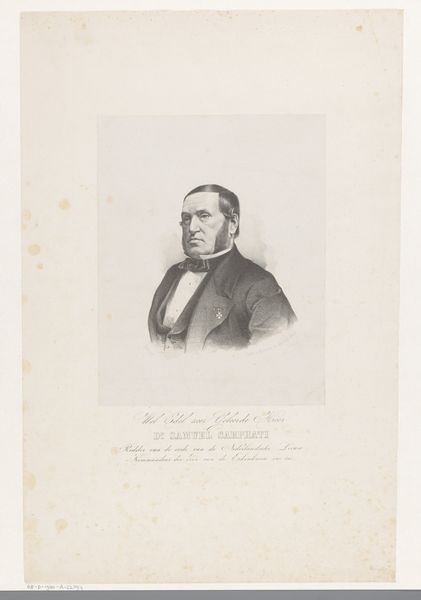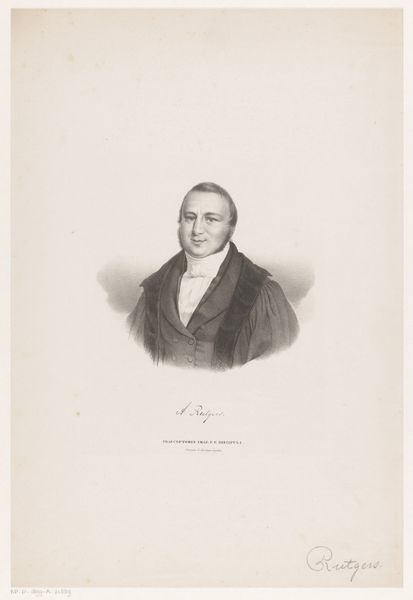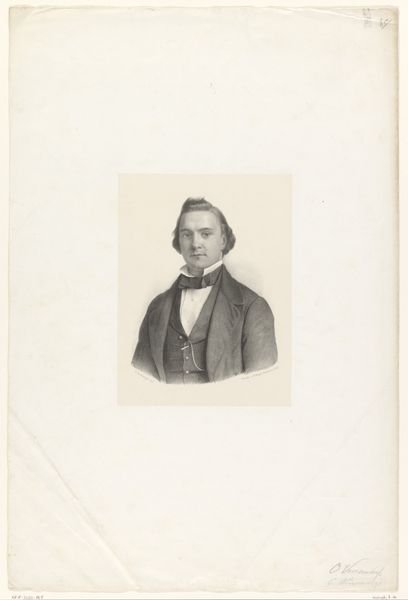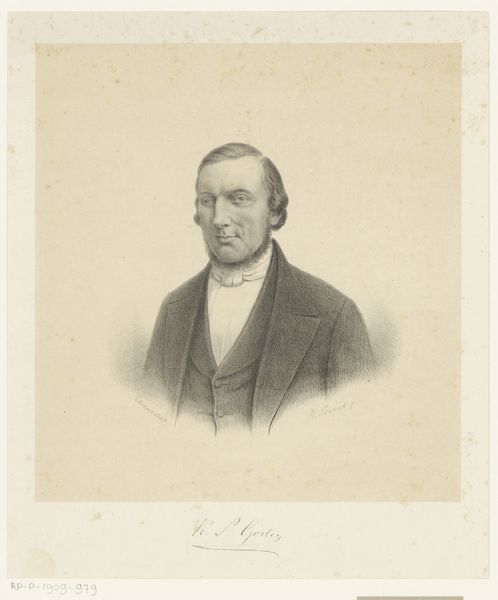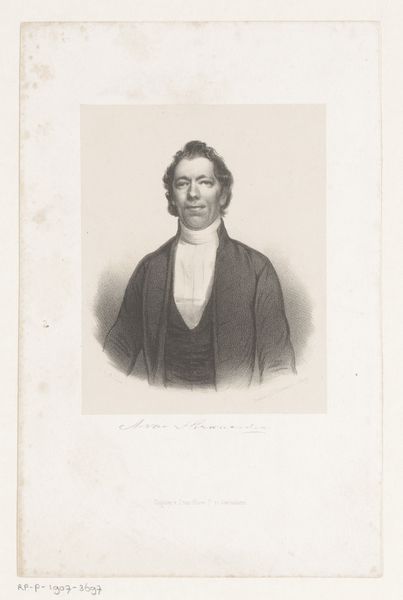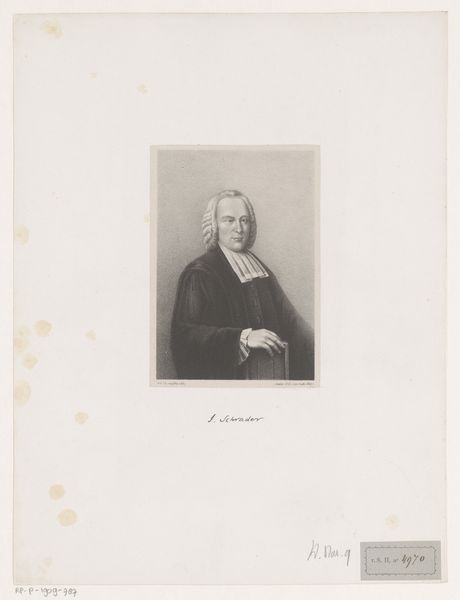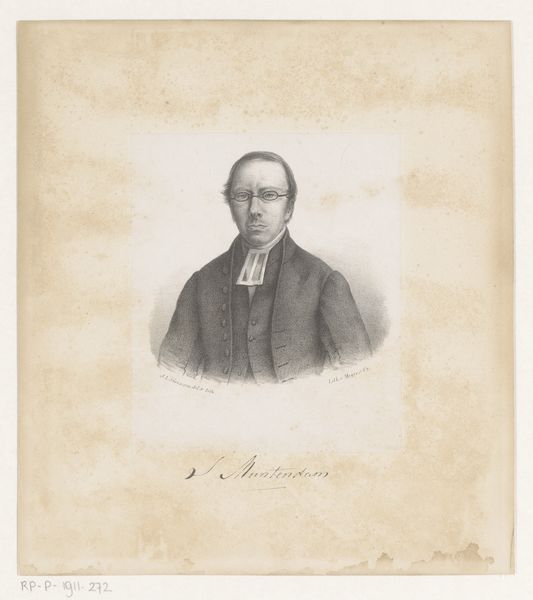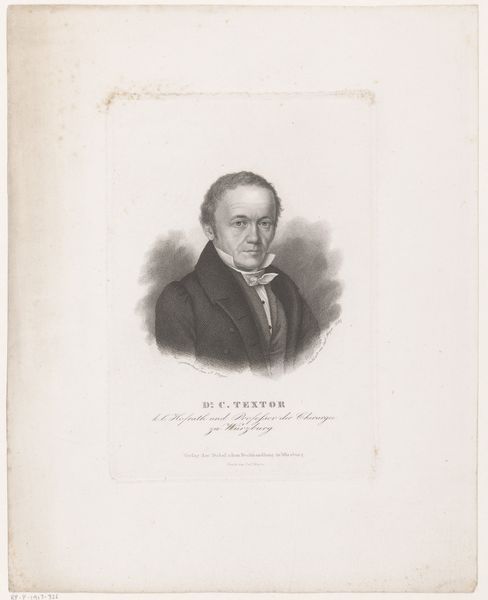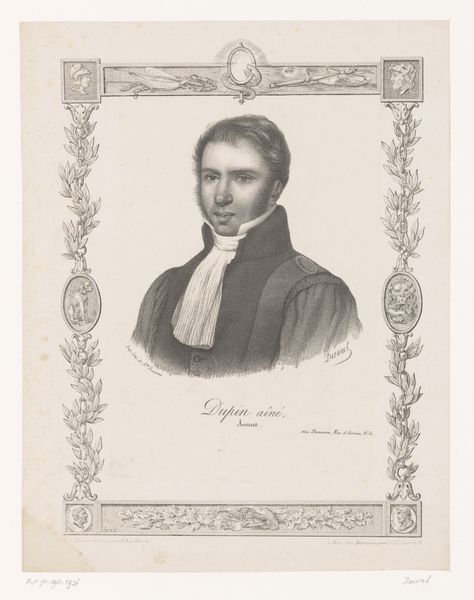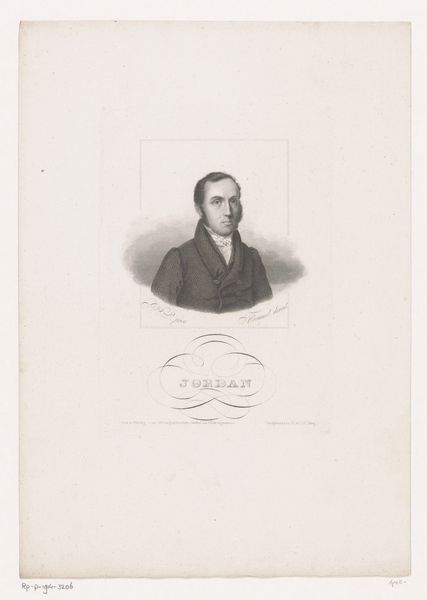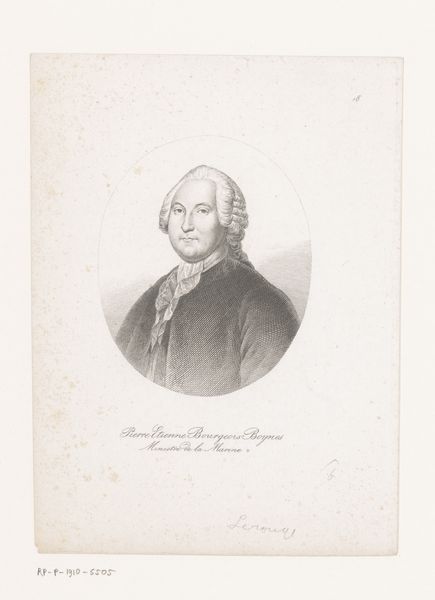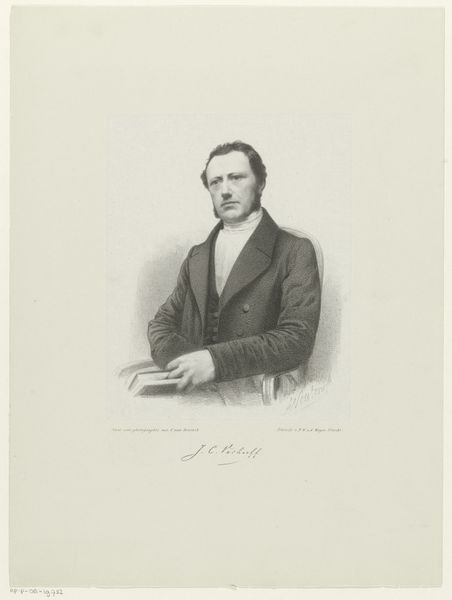
print, engraving
#
portrait
#
neoclacissism
# print
#
old engraving style
#
historical photography
#
old-timey
#
history-painting
#
engraving
Dimensions: height 435 mm, width 300 mm
Copyright: Rijks Museum: Open Domain
Curator: Standing here, we're looking at "Portret van Johan Herman Bösken," a print created after 1834. Editor: Immediately, it strikes me as somber, a touch severe. The muted tones and the subject's serious expression create this old-world feeling, almost like looking into a bygone era. Curator: As an engraving, its creation involves a very particular kind of labor, painstakingly incising an image onto a metal plate, often copper or steel. Consider the time and skill required; printmaking like this made portraits somewhat more accessible. Before photography's prevalence, printed portraits circulated likenesses within society. Editor: You're right, I was stuck on the atmosphere, but understanding the 'how' really shifts my perspective. I'm now considering the printmaking as a form of early social media almost! Curator: Precisely! Notice, too, how the very *form* carries meaning. The crisp lines of the neoclassical style— the careful shading, the formal composition – everything is meticulously constructed to convey not just *likeness*, but status. He's shown wearing what appears to be clerical garb which locates him very distinctly in the social and economic system. Editor: Yes! There's definitely this sense of presenting the *ideal* image of a respectable man. I wonder what stories aren't told, masked by the precision of the technique. The unyielding expression gives almost nothing away! Is it just me, or is it sort of unnerving? Curator: I find it reveals the values that the commissioners were seeking to show off about the people represented. What's considered admirable or respectable can be understood from the very creation and distribution of such items. Bösken, in a way, becomes a material commodity circulated through the engraving, speaking volumes about consumption. Editor: That’s really interesting, to think about that process. I’d like to remember to view similar artworks through this angle from now on. Curator: By examining the artwork through these various layers, we start appreciating these items on a wider plane of ideas, practices and people beyond what they represent.
Comments
No comments
Be the first to comment and join the conversation on the ultimate creative platform.
